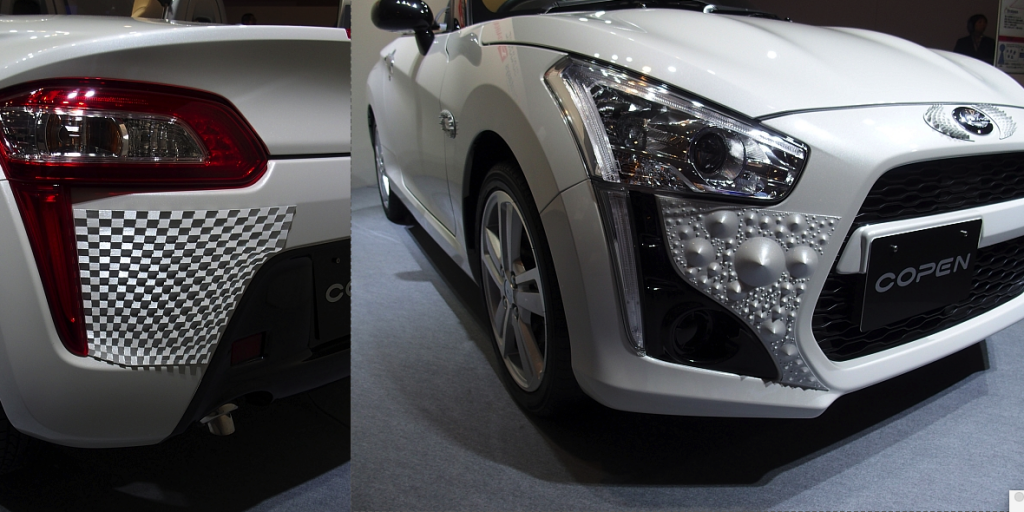 If dystopian futures have taught us anything, being able to create matter seemingly out of thin air will lead us to devastating technological advancement and inventions. If you do not agree, think about what happened to the Bentley butler car concept. 3D printers are the precursor to these god-like tools of the future and could lead to our untimely demise. But, they’re totally cool! With the right kind of blueprints, you can print just about anything.
If dystopian futures have taught us anything, being able to create matter seemingly out of thin air will lead us to devastating technological advancement and inventions. If you do not agree, think about what happened to the Bentley butler car concept. 3D printers are the precursor to these god-like tools of the future and could lead to our untimely demise. But, they’re totally cool! With the right kind of blueprints, you can print just about anything.
Manufacturers have caught on to this idea and turned it into a money-making opportunity. Specifically, car manufacturers who are wanting to save money on printing their own car parts. Manufacturers are capitalizing on the idea of being able to create any car part they want in a moment’s notice.
But, is this a good thing? We’re weighing the pros and cons of 3D printed car parts and determining if they really have a place in our society. First, it’s manufactured drive shafts and brake gauges. But what comes next… the 3D printed death lasers?
Pros
Lower costs
One major win for the consumers is the potential lower price in automotive parts. This could mean cheaper vehicles and car repairs, so you can invest in something more exciting – like an online defensive driving course! The average cost for a car is upwards to $35,000. Being able to print all the parts you need to assemble a car could lead to lower prices in the future. It’s cheaper to print parts than ship them from an international factory.
Limitless potential
3D printers allow manufacturers to create the specific car part with limited resources. With the right kind of blueprints, you could have limitless possibilities in what is created. That crankshaft in blue? No problem! Crankshaft in red? Easy! Like we said, limitless possibilities!
Reduced risk of faulty parts
Human error plays a major role in the poor performances of car parts. Very easily, a piece of a car can be developed lackadaisically because of someone wasn’t paying attention, faulty error, or just blatant distractions. 3D printers can take out the human error variable and replace it with hardcore precision.
Eco-friendly without the waste
Car manufacturers contribute to creating the waste product. Whether it’s throwing out the faulty products or creating waste from excess resources, these mass-produced parts can build up landfills. With 3D printing, there’s no waste product. The only waste is the time not spent on 3D printing!
Cons
Slow process
One annoying con to 3D printing is the time put into manufacturing parts. In 3D printing’s current state, printing parts is a tedious and time-consuming process. As the technological means become more developed, we can expect mass manufacturing to become a quick and simple process. Just like any printer, expect a jam.
Limited printing material
When you’re printing documents, you always have to make sure you’re stocked with plenty of paper. The same goes for 3D printers. They might not use white 8.5” x 11” sheets of paper, but they do require filaments to build your print. Because of this, printing can be limited.
Reduces manufacturer jobs
The other downside to introducing mass 3D printing to manufacturers is the impact on the job market. Replacing human workers with robot counterparts will cause a spike in the unemployment rate. This can be worrisome to some. But, is less work really a con?
Increased emissions
3D printing may be eco-friendly when reducing product waste, however, they make up for their green existence with excessive carbon emissions. Generating 3D car parts out of nothing comes at a price. That’s pollution in the air. The good news is 3D printers are still in early development, so we always have hope for a cleaner air future.
Learn more
3D printing added a whole new world of possibility to printing—literally—and has already revolutionized how manufacturers create originals and new ...
Your car is one of the most expensive single items you own, besides your house and perhaps, your other cars. Therefore, it is one of the things yo ...
There can be no doubt tat all document outsourcing companies are not created equal. The quality of the documents that they produce can vary greatl ...
The life of modern man is becoming more dependent on the devices used by the people who surround him, and many other things. Smart machi ...
Email marketing is a great tool for businesses to reach out to their existing customers. Email campaigns can be for a variety of events, such as a ...







